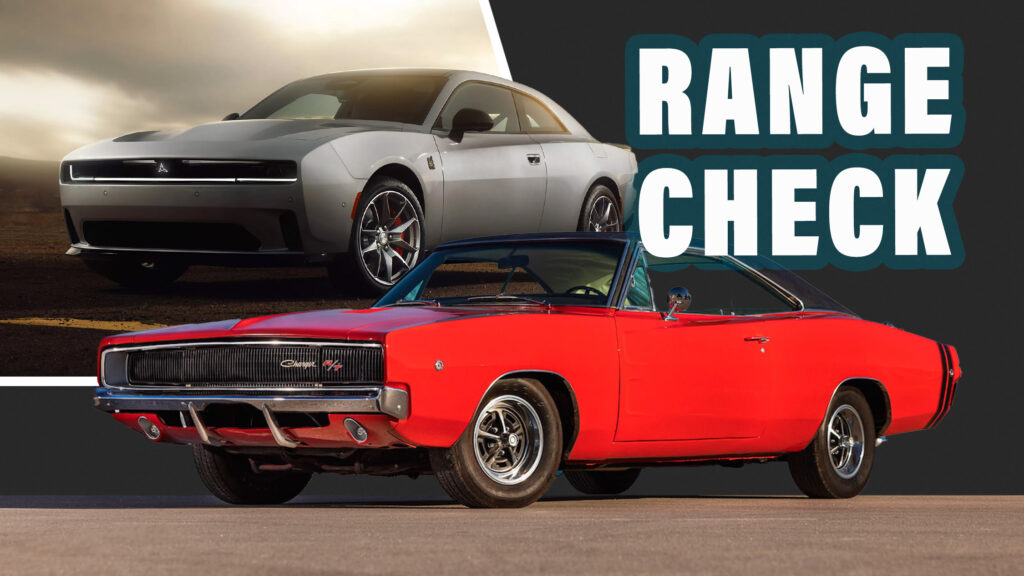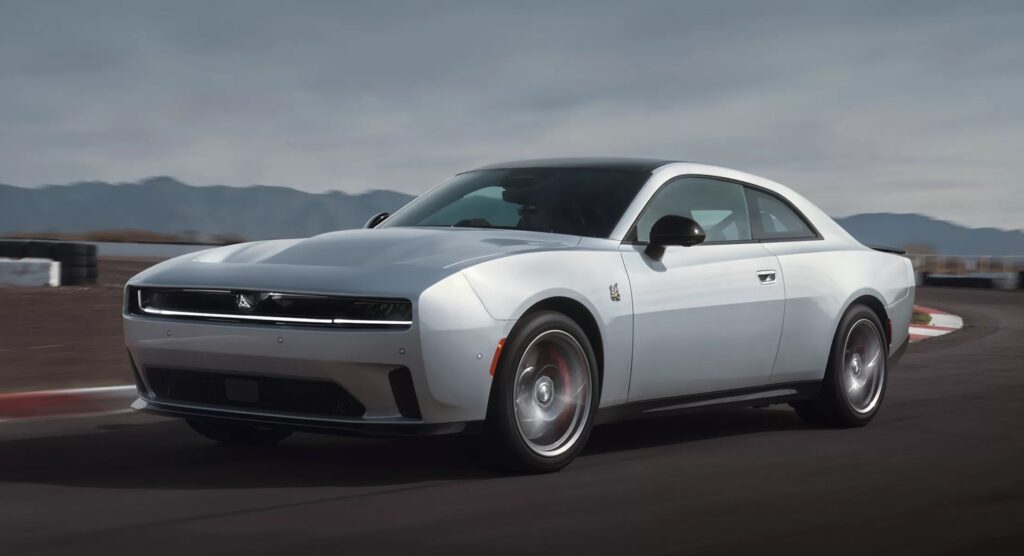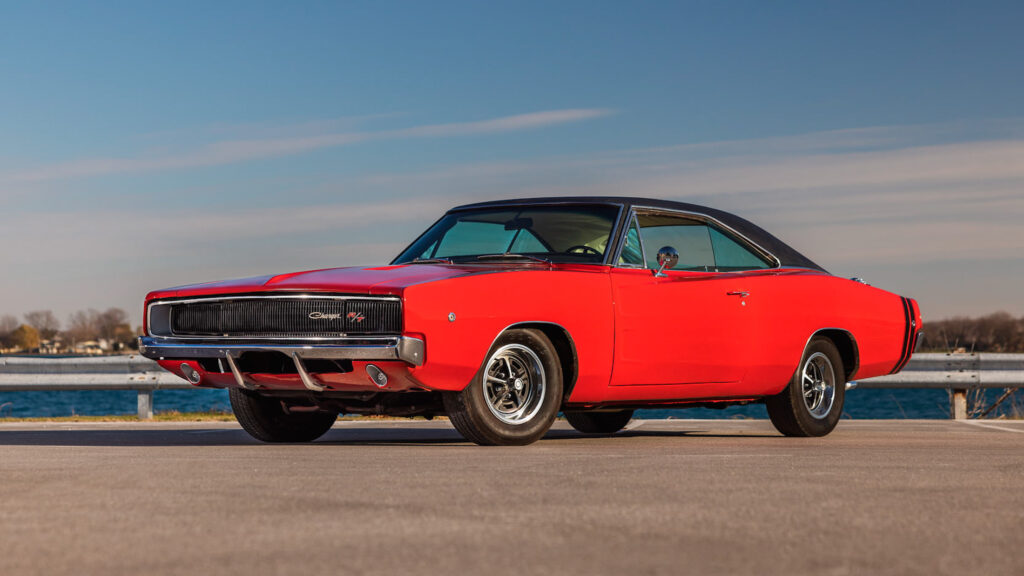The classic V8 Charger has a fairly big fuel tank, but also a really big appetite for gas
2 hours ago
 –>
–> 
–>
The Charger might have gone electric, but CEO Tim Kuniskis went out of his way to explain at the 2024 Charger Daytona’s launch that the company’s first EV definitely wasn’t designed and engineered with efficiency and driving range as a top priority.
“Every decision on this car we made hurts efficiency. Fratzonic: hurts efficiency. 305s, 325s [section width tires]: hurts efficiency. Sixteen-inch brakes: hurts efficiency,” Kuniskis told the media.
The base electric Charger, the 496 hp (503 PS / 370 kW) Daytona R/T, has a range of 317 miles (510 km), which is pretty good for a car that weighs 5,838 lbs (2,650 kg), though not that great considering the capacity of the 100.5 kWh battery, whose size goes a long way towards explaining the curb weight. An entry-level Lucid Air has an 88 kWh battery and can do 410 miles (660 km) on one charge.
Related: The Dodge Charger EV Sacrifices Range For Muscle Car Performance

And it gets worse. Upgrade to the sporty Scat Pack, and you automatically downgrade your Charger Daytona’s driving range to 260 miles (418 km). The two models use the same battery, but the Scat Pack makes 670 hp (679 PS / 500 kW) and comes equipped with range-sapping 20-inch wheels wrapped in fat rubber instead of the R/T’s 18-inch hoops and skinnier tires.
And those aren’t real world range numbers, remember. Owners are likely to see lower figures, especially if they use the performance at all. And let’s say you never charge past 80 percent because you want to keep your battery in optimum health, and you never let it drop below 20 miles of remaining range because you don’t want to run out. You could be looking at a practical working driving range of well under 200 miles (320 km) in the Scat Pack.

Which it turns out gives the Daytona Charger Scat Pack a strange kinship with the 1968-70 Charger it wants us to believe inspired it. The vintage Charger had a reasonably large 19-gallon (72 liters) gas tank, but Car & Driver’s 426 Hemi road test car weighed 4,035 lbs (1,830 kg) according to the spec panel in its November ’67 issue, and reportedly returned 9-12 mpg, giving a range of 171-228 miles (275-367 km). That compares with the EPA’s 18 mpg rating for the now-dead 2023 Charger 392, which suggests a range of 333 miles (631 km) going by that car’s 18.5-gallon tank capacity.
Oh, and in case you’re wondering if the real 1969 Charger Daytona’s aero nose extension helped matters at all, it didn’t much. Road Test magazine covered 893 miles in a 440 wing car in December 1969, and achieved 11.3 mpg (which would equate to a 215-mile / 344 km range), though it’s a sign of how much things have changed that the writers seemed quite impressed with that result.
So when it comes to range, the 1960s Charger and its modern electric namesake have plenty in common. But what a shame Dodge didn’t give the new car a charging port that looked like the motorsport-style gas cap on the rear quarter of the old timer.

 <!–
<!– –>
–> 
